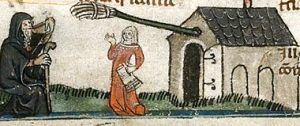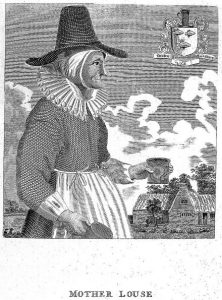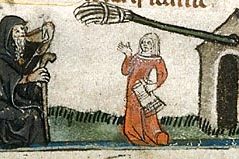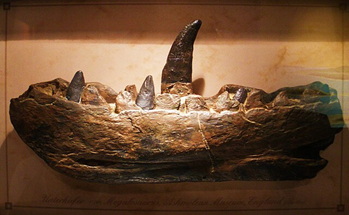The Importance of Ale
From the 1300s to the late 1700s, the most popular drink was ale.
Ale, also known as “small beer”, was nutritious, easy to produce and cheap. It was consumed every day by every person in medieval England, including children, as the alcohol content was low, only serving as a preservative. It was a drink necessary to public health, as it provided hydration and nutrition in a time when sources of safe, fresh water were extremely unreliable. Records show that workers in some industries, such as agriculture, could even choose to be paid in ale rather than traditional currency.
Wine was expensive, owing to the complex nature of production and cost of sourcing ingredients, and European style hopped beer had not yet reached England, so the market was dominated by ale, particularly among the lower classes. It had a short shelf life and wasn’t transported well, necessitating small scale local production in medieval towns. In 1577, there was one alehouse for every 142 inhabitants per town. This novel business structure meant that women were able to participate in the industry. They became brewers, known as Alewives.
What were Alewives?
It wasn’t merely that women were able to take part in the brewing industry – they dominated it. Evidence from medieval records includes regulations that appear to treat brewing as a purely female endeavour.
Alewives would brew in their homes, most often using malted barley or oats. They often made ale at first just for their family, selling the excess, then expanding to take on local customers from nearby families, transitioning to a small scale commercial enterprise. Women were allowed to continue their trade because it was a simple scaling up of the responsibility they had to provide food and drink for their own family, and public perception was generally positive.
There was no shortage of demand and so it was feasible to make an income selling ale on an ad hoc basis. It was the perfect part-time job for medieval women, both in large towns and in rural areas, and afforded them a degree of freedom and financial security that would have been very rare. The income generated by making and selling ale was usually supplementary to the money their husband made but, in a few select cases or when the woman was widowed, brewing could be the primary source of household income.

A depiction of an alewife in the pictorial cycle of the “Thrice-Sinning Hermit” on page 114v of the Smithfield Decretals, c. 1300-1350.
Alewives in Oxford
Brewing was a thriving industry in Oxford, and there is a wealth of information about alewives from various medieval sources, including laws and regulations concerning the manufacture and sale of ale. Some prominent alewives are mentioned by name, such as Maud London, a brewer living in Oxford during the fourteenth century who, like many prominent names in the industry, was unmarried. Documentation of poll taxes confirms that there were a number of both unmarried and married brewers living in Oxford, though the sources tend to disproportionately represent wealthier women or larger scale brewing endeavours, with the more common but very small scale production flying mostly under the radar.
Brewers in cities tended to come under closer scrutiny than in rural areas, which is why there is a good amount of written evidence concerning brewing in cities such as Oxford. Oxford authorities implemented a number of increasingly harsh regulations on the brewing industry in the 1300s which had a massive impact on alewives.

Queens College had its own brew house from 1340, but the medieval halls of residence still very much relied on local brewers.
Queens College had its own brew house from 1340, but the medieval halls of residence still very much relied on local brewers. Brewers were initially able to sell ale to the Oxford university scholars easily and the business was very reliable. However, professional breweries began to spring up as the scale of the potential profit enticed businessmen into the industry. These larger scale male-owned businesses accounted for one in four brewing households, in an industry that had previously been very casual, female dominated and home-based. As the market expanded, the alewives found they held an increasingly small share.
Female brewers, whether they were married, single women or widows, were slipping in relevance. Married brewers became subject to a new law, instituted by King Edward III, which required that their husbands take responsibility for any harm caused to a scholar through inferior quality ale. This was done presumably to ensure high standards and to discourage criminal activity around Oxford’s unique food and drink market. Intentional or not, it had the effect of making it very difficult for married female brewers to continue working, for fear that their husbands be made liable for any alleged ill-effects. It is probable that a great number of men who previously encouraged their wives’ brewing activities, and who doubtless appreciated the additional household income, now felt it was too great a personal risk for her to continue.
Single women and widows had mostly abandoned the profession even before this law came into effect. In 1311, 20 percent of brewing households were led by women, but this fell to about 17 percent in the 1330s and 1340s. In addition, unmarried or widowed women were being relegated to the less prestigious and less lucrative work within the ale market. Fewer and fewer households profited from commercial brewing, and were being pushed out by professional brewing organisations. After the Black Death in 1348, this trend intensified. Oxford lost one third of its population, and those that survived had less money to spend. The market became unpredictable and unprofitable. Many brewing households went out of business in a rapid decline.
Finally, in 1355, Oxford University was granted sole jurisdiction by the King of the entire brewing trade in Oxford. Over the following decades and even centuries, brewers in Oxford worked within the confines of this uniquely intense regulation and scrutiny. The business became extremely difficult for everyone but experienced businessmen, who quickly took over the industry. Brewing became overwhelmingly male, dominated by middle class businessmen with enough employees to run large scale operations.
The wealth of evidence concerning the medieval brewing industry in Oxford clearly shows how a handful of regulatory measures directly impacted the sexual division of labour within brewing. The intense regulation of the market, coupled with the particular economics of a university town, caused sweeping and irreversible changes to the brewing industry and to the women whose livelihoods depended on it.
By the 1400s almost all women were gone from the brewing trade, except for a handful of widows who were either unable to make money any other way or who had inherited their husband’s brewing business. A list from 1447, of twenty Oxford brewers contained one woman, a brewer’s widow. Another from 1501, featured 6 widows among 23 brewers. Probably as a result of the high mortality resulting from plague, a number of small businesses were inherited by the wives of deceased male brewers, although these women could not join the brewers’ guild or negotiate with the university. A brewer’s widow could continue his work provided she did not remarry and that no male heir took the place of her husband. Gradually these women were also pushed out, given the narrow confines under which they could continue to work.
Falling into Disrepute
A small minority of women continued to work in the ale industry, moving into less well regarded jobs working in alehouses, though still known as alewives. Public opinion surrounding alehouses was low, as was the consumption of strong alcohol, such as hopped beer which had spread from the Netherlands and Belgium to England in the late 15th century. The alehouses were blamed for a whole host of social and moral problems in medieval England. Consequently, as women involved in brewing fell into the minority, the alewives became the scapegoat for the brewing community as a whole for the vices thought to be caused by alcohol. In 1540, the city of Chester decreed that women between the ages of 14 and 40 were to be banned from selling ale, after a widespread fear that female ale sellers would use their sexual desirability to spread immorality. Ale sellers were accused of a number of moral crimes, including disobedience to their husbands, but also of cheating their customers or charging unlawful prices. Interestingly, a 1324 record of criminal acts perpetrated by brewers and ale sellers in Oxford shows that crimes were split fairly equally between the sexes, though most negative rhetoric surrounding brewers specifically targeted women. The alewife became a popular caricature of the period and was often a source of both comedy and condemnation, particularly by the church. A parallel was drawn between alewives and prostitutes, and the alewife was thought to encourage a wide range of sins. She was satirised and derided in popular plays, poems and songs, while male brewers continued to take in good profits.
By the 16th century the depiction of alewives had become extremely hostile, depicted as morally unclean and lacking in even basic sanitation, running filthy alehouses for the worst people. They were depicted as liars and cheats, which was a common anxiety about the profession in general but directed disproportionately at the few remaining female brewers and tavern owners. The consumption of alcohol was becoming increasingly associated with sin and antisocial behaviour, which women, due to widespread misogyny, were thought to hasten.
Relation to Witches

Mother Louse, a notorious alewife in Oxford during the mid 17th century, by David Loggan
Some historians have noted similarities between the affectations commonly associated with alewives and common portrayals of witches. Even today many of the stereotypical images we associate with witches – bubbling cauldrons, black cats, pointy hats, and broomsticks – seem to stem directly from Alewives and their negative portrayal. It was traditional for an alewife to display a broomstick outside the home, sometimes known as an alestake, to signal that ale was available to purchase. Cats were an obvious ally of alewives as they kept mice out of their grain supply. The tall black hat was thought to be part of an unofficial uniform for brewers, to help them to stand out in a public market place. Alewives, like witches, were usually depicted as either youthful temptresses or old crones. A 17th century satirical engraving of an alewife, known as Mother Louse, certainly looks very like a stereotypical witch, with her tall black hat and old fashioned ruff. She was said to be the last woman in England to wear a ruff, signifying her as out of step with society and modernity.
Like witches, alewives (and particularly widows) were viewed with suspicion as they occupied a place on the fringes of society. People had to trust them to supply a safe beverage in a time where it could be impossible to access clean water, and that led to a widespread fear of being betrayed by them, of being poisoned.
Over the course of a few hundred years in the medieval period, brewing was gradually transformed from a small scale domestic industry that afforded women the rare opportunity to take control of their finances into a large scale industrial operation, taking place in factories, and favouring the endeavours of wealthy business men. Women were less able to partake in an industrialised industry, given their duties to their household and children, and once the work of brewing became separated from the home, women no longer had access to it. Female brewers were subject to misogynistic laws which made it extremely difficult for them to continue their trade, undercut by larger businesses and ultimately pushed out of their livelihood. The women who had been instrumental in the brewing trade were caricatured and satirised, so that no woman could continue to work as an alewife and keep her reputation intact.
Written and researched by MOX volunteer Elizabeth Kuligowski.
Want to write your own Oxford-inspired post? Sign up as a volunteer blogger.
Bibliography
Ale, Beer, and Brewsters in England: Women’s Work in a Changing World, 1300-1600, Judith M. Bennett, Oxford University Press, USA, 1996
The Ale-Soaked Medieval Origins of the Witch’s Hat, Vice, 2018
https://en.wikipedia.org/wiki/Alewife_(trade)
https://en.wikipedia.org/wiki/Ale
https://www.britishmuseum.org/collection/object/P_1848-0911-483



